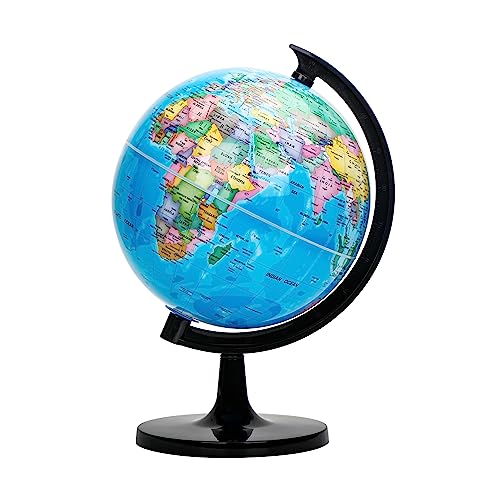The Purpose of the Terrestrial Globe
The terrestrial globe, also known as the earth globe or world globe, is a three-dimensional representation of the Earth. It serves several purposes, both educational and decorative, making it an important tool in various fields. Let’s explore the different uses and significance of the terrestrial globe.
Educational Tool
One of the primary purposes of the terrestrial globe is as an educational tool. It provides a visual representation of the Earth’s geography, allowing students, researchers, and enthusiasts to gain a better understanding of our planet’s physical features. With a globe, individuals can learn about continents, countries, oceans, mountain ranges, and other important geographical aspects.
Moreover, a globe provides a tangible and interactive way to study various geographic relationships. Users can visually observe the Earth’s rotation, tilt, and the positions of different countries in relation to the Equator and other reference lines. This hands-on experience aids in comprehending concepts like time zones, climate patterns, and the effects of Earth’s rotation on daylight and darkness.
Reference for Astronomical Observations
In addition to its educational value, the terrestrial globe also serves as a reference tool for astronomical observations. By accurately representing the Earth’s surface, it aids in understanding the positions of celestial bodies relative to specific locations on Earth. Astronomers, navigators, and stargazers can use the globe to determine the positions and movements of stars, planets, and constellations in relation to specific latitudes and longitudes.
Furthermore, the globe’s representation of the Earth’s axial tilt enables users to visualize the changing seasons and the corresponding positions of the Sun. This information is particularly relevant for agricultural planning, as it helps farmers determine the ideal timing for planting and harvesting crops.
Decorative Piece
Beyond its educational and functional uses, the terrestrial globe can also serve as a decorative piece. Its aesthetic appeal makes it a popular choice for classrooms, offices, libraries, and even homes. A carefully crafted globe not only adds visual interest to a space but also sparks curiosity and inspires a sense of wanderlust.
Decorative globes come in various sizes, materials, and designs, allowing individuals to choose one that complements their interior style. Some globes include additional features, such as illuminated lighting to simulate daylight and nighttime conditions or raised relief to accentuate mountain ranges and other topographical landmarks.
Symbol of Global Perspective
Finally, the terrestrial globe serves as a symbol of global perspective and interconnectedness. It represents our shared home, reminding us of the diversity and unity of the human experience. Whether used in classrooms, boardrooms, or public spaces, the globe serves as a visual reminder of the importance of global cooperation, cultural exchange, and environmental stewardship.
Through the globe, we can appreciate the vastness of the Earth and the intricate web of physical and cultural phenomena that exist across its surface. It encourages us to think beyond national borders and develop a broader perspective on the challenges and opportunities that face our world.






